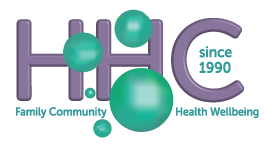Filling in the Gaps: A Homeopath’s Tour of a Dental Technician Lab
Visiting Mike the dental technician was like creeping into a busy cave with a background of noise and lights. There are the occasional grinding sounds, a compressor working and beautiful coloured beams coming from an array of complex digital equipment. It all cries out for a detailed explanation and Mike, who is at home here in his natural environment, is keen to talk.
However, the first thing I see is not the powerful computers but it’s the table full of paint brushes and possibly antiquated gear. I’m straight away indulging my morbid fascination with all the small instruments for shaping and building teeth by hand. These tools reflect the humble beginnings of dental technology which now seem so museum-worthy. They’re not fully replaced by high tech processes and clearly the dental technician has to understand the beginnings of the art of making teeth to be able to craft the gleaming gems we see in peoples mouths.

Mike says his work as a dental technician is some kind of balancing act between needing to understand or have experience in the traditional methods alongside the very latest innovations. The new, builds on the old. His skills, which range from tried-and-tested techniques to state-of-the-art digital processes, make him an expert in the field. But he laughs when I say that to him.
So this all needs a creative mind or artistic bent to be able to keep upgrading to the latest innovative methods for the current demanding dental challenges. After this visit, I can understand somewhat how much is involved in the technical reproduction of tooth shapes.
But why does a homeopath want to visit a dental lab?
- An increasing number of people approach my clinic asking about gingivitis and problems with their teeth.
- We have so many great dental homeopathic remedies that can help alongside all this dental technical wizardry including remedies made from Titanium and Zirconium.
- I want to know more about what’s gone into my patients mouth when they’ve had dental surgery and crowns or implants.
And like I said before, the foundation of dental technology rests upon the instruments and materials used over time. As dental technology progresses, so does the capacity to provide better, less invasive treatments, which really does improve patient experiences. Fascinating to me because if I compare this with the attempt of modern pharmacy to provide better and less problematic treatments then I would never be able to declare that patient experience has been generally improved. Instead we see a mass movement to embrace homeopathy.
The Evolution of Dental Technology
People still have a decent fear of the dentist, but the dental drill, for example, once a horribly basic thing really worth being afraid of, has been improved over time into the high-speed, precision instrument we are familiar with today.
Throughout the 19th century, dentistry underwent significant changes, with the introduction of reclining dental chairs, rubber dental dams, and the foot-powered dental drill. These all increased patient satisfaction. Then the 20th century saw many more advancements, including the use of local anaesthetics and the first electric toothbrush.
Next comes the use of CAD/CAM technology which has completely changed the way dentists and dental technicians work. They are able to come up with complex designs on the computer and carefully implement them.
I’m looking around the cave and wondering about breathing in dust but Mike reassures me that there is less dust or exposure to air borne particles nowadays. A more efficient and safer way of working is one of the benefits brought about by this technological revolution with help from dust extraction fans and a huge open door during work hours.
What are the steps involved in making teeth in the dental lab?
It’s all so sophisticated, I’m kind of stunned to tell you the truth. An incomprehensible number of screens and equipment is needed. I watched fascinated as the design came from the screen and ends up being 3D printed and then I’m holding the sample new crown in my hand.
- The dentist takes photos inside the mouth capturing all the different bits of individual dental anatomy with an intraoral scanner and sends them to Mike. From the photos they have to be able to take into account bite alignment and adjacent teeth while designing.
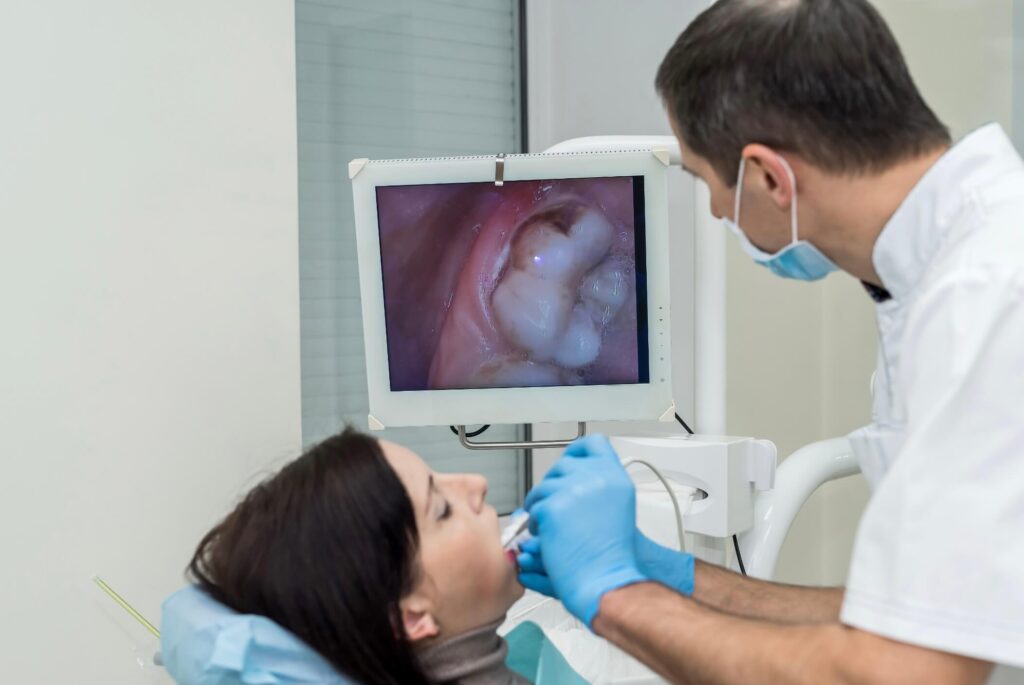
- The dentist sends Mike the 3D digital images of the patients mouth. The yellow tooth in the image below is one that will have a crown made for it. A dental crown is a tooth-shaped cap which snugly fits over the entire tooth.
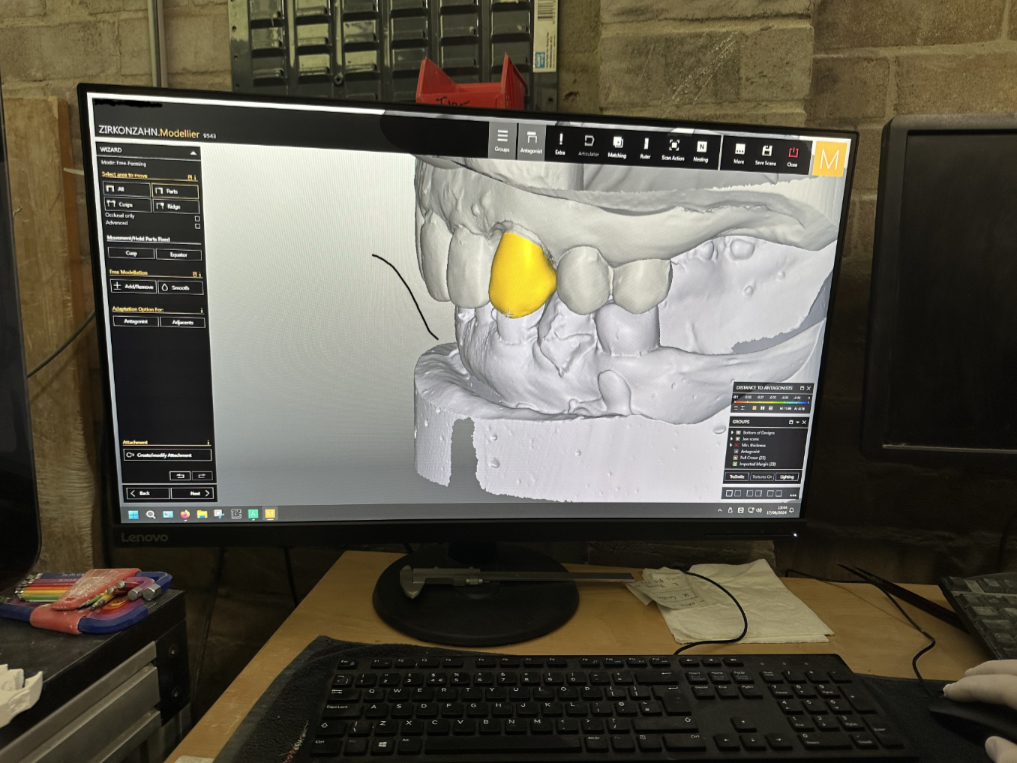
- Computer aided design and computer aided manufacturing (CAD/CAM) software uses these images to design restorations, veneers, bridges and implants. In this case it’s a custom crown.
- Then a design is positioned or nested over the unused part of the disc of dental material ready for the Milling Unit.
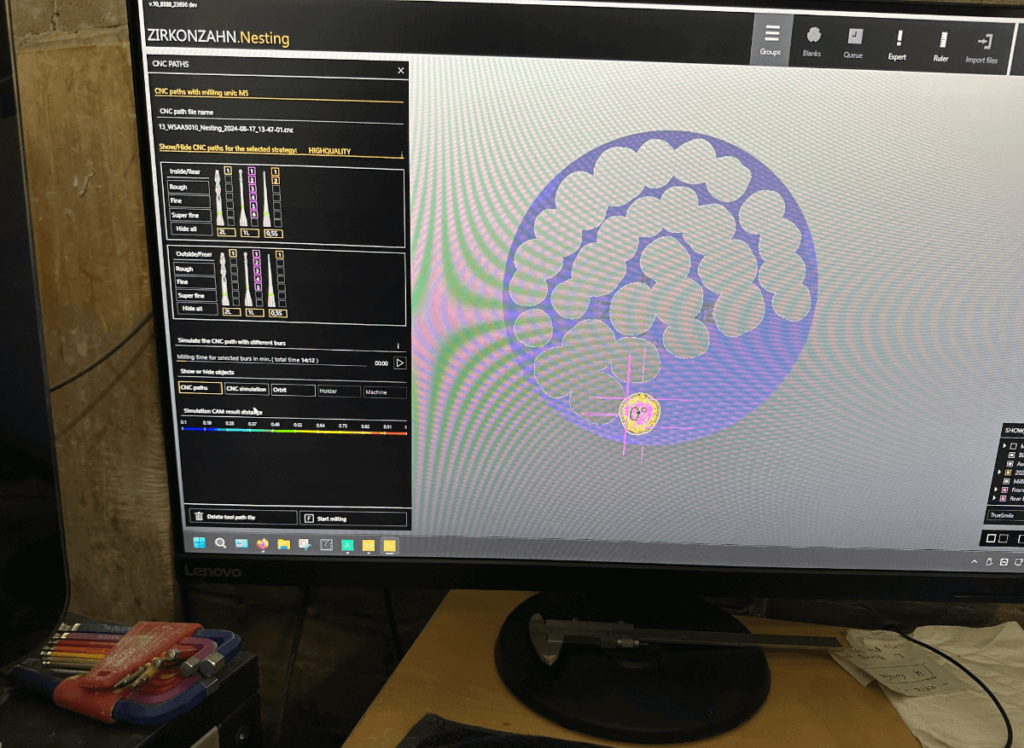
- The Milling Unit cuts out the shape from the disc from where other teeth shapes have been cut before.

- Next we look at the 3D printer which has been fired up ready to go. The resin used in 3D printing dental crowns is just as important as the technology itself when we want it to be durable and biocompatible.
- Once printed, the crown has to be processed and washed to remove any uncured resin. Any minor adjustments or polishing are done to ensure a perfect fit. Then Mike does some artistic finishes.
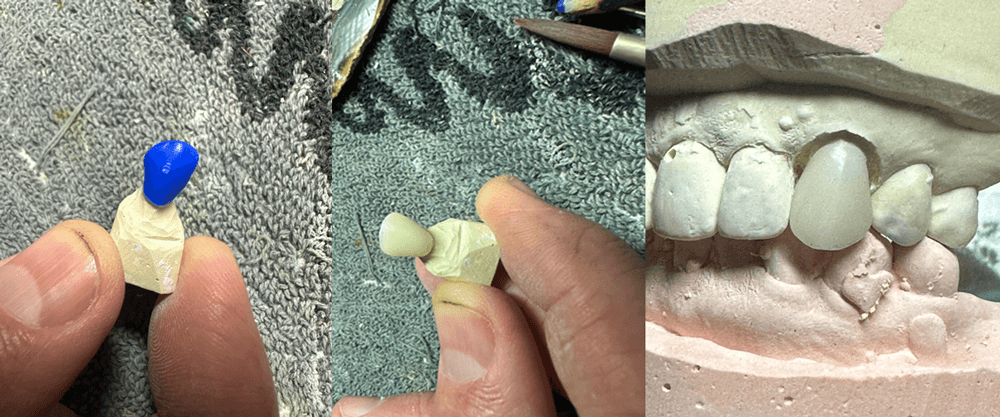
The qualities of advanced dental materials
It’s another area of huge leaps forward. There is no mention of amalgam anymore and advanced dental materials have taken over. Importantly they can be biocompatible (the ability of the implant material to integrate with the body without causing a reaction). Mike can craft crowns from a variety of materials, but one of the most popular is zirconium dioxide.
Zirconia
- Malleable and can be modelled easily.
- Able to match the existing tooth colour with precision because it has a translucent property.
- Biocompatible, non-toxic, hypoallergenic and metal free.
- Zirconia crowns are durable but they’re also gentle on your opposing teeth, resulting in less enamel wear.
- Zirconia crowns are very strong and can withstand heavier forces than other types of ceramic crowns.
- Zirconia implants are resistant to plaque buildup, reducing the risk of peri-implantitis (inflammation of the tissues surrounding the implant, including the gums and supporting bone structure).
Gold crowns
- Gold has been used in dentistry for tooth repair for more than 4,000 years (apparently!)
- It has antimicrobial properties. When bacteria comes into contact with gold, the bacteria cell wall is damaged.
- Pure gold crowns are no longer a preferred choice and now it is mixed with other metals such as palladium, copper, silver, nickel, or chromium.
- High gold content crowns and inlays are still the best restorative option for posterior teeth but are not used as much due to escalating alloy cost and aesthetics demands.
Titanium
- Titanium is a truly biocompatible alternative to the more traditional gold crown and has an ability to integrate with the jawbone.
- Suitable for posterior crowns and bridges.
- Titanium implants have the ability to attach to bone and grow into the implant as it heals (osseointegration).
- Is known for its durability so that the implant can last for years or even permanently.
- Not suitable for people with metal allergy.
What can homeopathy offer in this high tech dental world?
To answer this question I took a look around the literature and found Dr. Loubna Mejjanid*, (in a French document referenced below) going as far as saying homeopathy is a “holistic, alternative, complementary, and precise humane medicine [which] has changed my dental practice and my life”.
That’s a pretty strong statement.
Then just as strongly, according to Hoseinishad who writes about homeopathy in dentistry “Homeopathy is an alternative therapy that seems to be effective in cases of treatment failure to conventional drugs.” The cases he is referring to are complex chronic pathologies: Atypical facial pain, burning mouth syndrome, postoperative osteitis, recurrent infections as well as anxiety before dental treatment. Some of these problems are difficult-to-treat if choosing from the conventional medicine options.
Filling in the gaps, my closing thoughts
So my closing thoughts as I’m walking out the door of the dental technician lab? Yes, while Mike has been busy showing me how he helps fill in the gaps in peoples smile, I’ve filled in some gaps in my understanding. My mind is buzzing joining facts together about what I’ve learned today and my materia medica knowledge: the remedy made from Titanium for people who have some inflammation or reaction to it; Calendula and its powers for reducing dental inflammation; Arnica after any kind of dental surgery and Symphytum to aid bone regeneration.
Despite the differences in approach, homeopathic treatment can support conventional dental treatments and the high tech world of the dental technician.
Mike Rasmussen, Ceramist
Dentiform Australia, using Digital Workflow & traditional techniques. Instagram
Thank you Mike for taking the time to explain the world of the Dental Technician so passionately.
———————————————————————————————————————–
Reference: *Mejjanid L. 2023. Clinical Practice Improvement: Homeopathy Contribution to Dental. Dentaire. Surgery.p.23.
- Filling in the Gaps: A Homeopath’s Tour of a Dental Technician Lab - 08/11/2024
- Homeopathy surge worldwide - 11/08/2024
- Autism is helped by several different styles of homeopathy - 07/05/2024
